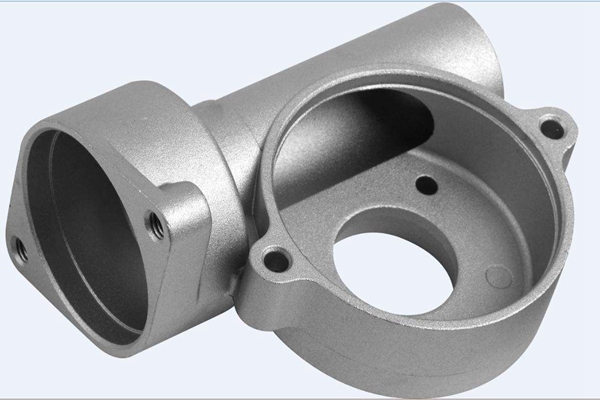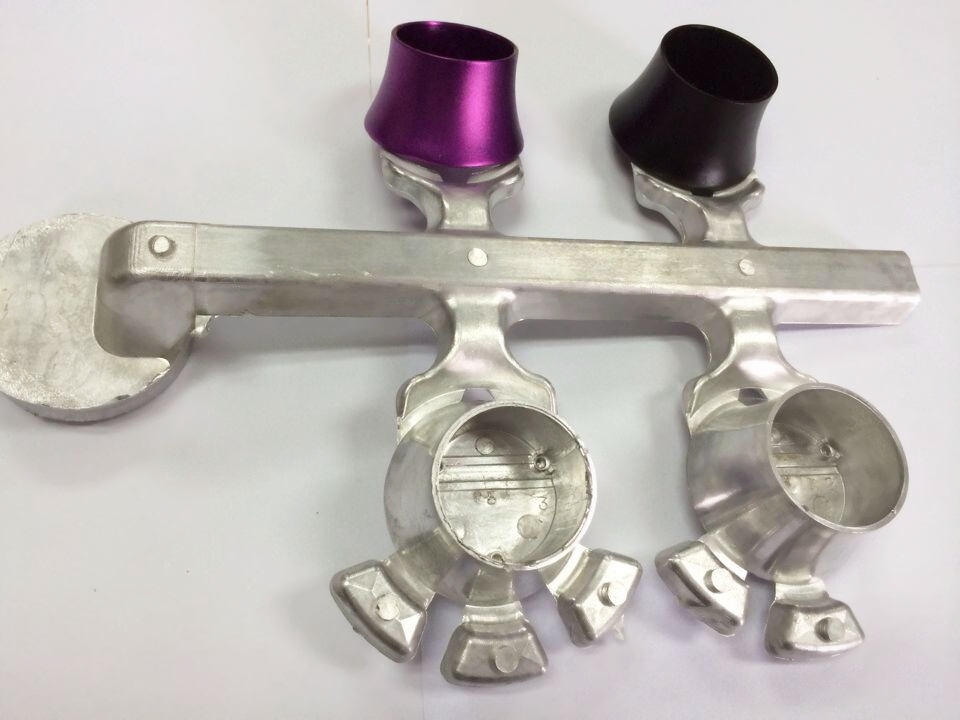Aluminum Foundry and Metal Castings: reliable choices for industrial needs
Wiki Article
All Concerning Light Weight Aluminum Castings: Comprehending Their Role and Value in Production
Light weight aluminum castings are essential to contemporary manufacturing, supplying a blend of lightweight homes and sturdiness. They facilitate complex styles while decreasing assembly expenses. Industries such as automotive and aerospace often utilize these parts for enhanced performance. However, the production of aluminum spreadings is not without its obstacles. Recognizing the subtleties of this process discloses both the benefits and potential pitfalls. Exploring these variables will certainly offer deeper insights right into their growing relevance.Summary of Light Weight Aluminum Spreading Processes
Light weight aluminum casting procedures play a necessary role in manufacturing, providing flexibility and efficiency. These procedures include putting molten aluminum into molds to develop specific shapes and elements. Different techniques are employed, consisting of sand casting, die casting, and investment casting, each differentiated by its technique of mold and mildew development and the desired application.Sand spreading utilizes a combination of sand and binder to form mold and mildews, enabling complex geometries. Pass away casting, on the other hand, entails compeling molten light weight aluminum right into metal molds, leading to high accuracy and smooth surfaces. Financial investment spreading, typically utilized for complex designs, includes producing a wax pattern coated with a ceramic covering, which is then full of liquified light weight aluminum.
These casting techniques deal with diverse industrial needs, making aluminum a preferred material for elements in fields such as automotive, aerospace, and durable goods. The choice of casting strategy substantially affects the end product's top quality and efficiency.
Benefits of Making Use Of Aluminum Castings
The advantages of utilizing light weight aluminum spreadings in manufacturing are numerous and considerable. To start with, aluminum's light-weight nature adds to minimized total item weight, improving energy performance in applications such as aerospace and auto industries. In addition, light weight aluminum castings display superb rust resistance, making sure durability and toughness in extreme settings. The material's thermal and electric conductivity likewise makes it appropriate for various applications, consisting of electronic devices and warm exchangers.On top of that, aluminum spreadings can be created with complex designs, permitting for much more complicated forms that fulfill details functional requirements. This versatility adds to minimized assembly expenses and boosted design flexibility. Furthermore, the spreading procedure itself is effective, permitting high-volume manufacturing with regular high quality. Ultimately, aluminum is recyclable, making it an eco-friendly alternative in manufacturing. Jointly, these advantages highlight why aluminum spreadings are increasingly preferred across diverse industries, supplying both performance benefits and financial performance.
Typical Applications of Aluminum Castings
While numerous products are utilized in production, light weight aluminum castings attract attention because of their broad variety of applications across numerous markets. These spreadings are commonly used in the vehicle sector for engine elements, transmission housings, and architectural parts, adding to lighter vehicles and improved gas performance. In the aerospace industry, aluminum castings are critical for aircraft parts, where weight decrease is vital for performance and security.Furthermore, the electrical market employs light weight aluminum castings for real estates and architectural elements in equipment, gaining from the material's outstanding conductivity. In customer goods, aluminum spreadings can be located in items such as devices and showing off equipment, offering resilience and a contemporary aesthetic. The building sector makes use of light weight aluminum spreadings in building elements, home window frames, and components, showcasing their flexibility and stamina. Generally, light weight aluminum castings play an important function in improving item efficiency and efficiency throughout different fields.
Key Production Techniques for Aluminum Castings
The manufacturing of light weight aluminum castings counts on numerous methods, with sand casting and die casting being among the most prominent. Sand casting involves developing mold and mildews from sand, enabling intricate designs and big elements. On the other hand, pass away casting makes use of high-pressure shot of liquified aluminum into reusable molds, offering accuracy and effectiveness for automation.Sand Casting Process
Sand spreading stands as one of the most extensively utilized techniques for generating light weight aluminum castings, many thanks to its convenience and cost-effectiveness. This procedure involves producing a mold from a mixture of sand and a bonding representative, typically clay. As soon as the mold and mildew is ready, liquified light weight aluminum is put right into it, permitting the steel to load the tooth cavity. After cooling down, the mold is escaped to disclose the spreading. Sand spreading fits complicated geometries and why not try these out big components, making it ideal for various applications. In addition, it permits for very easy adjustments, enabling suppliers to adjust styles quickly. However, the surface area coating may call for additional machining for specific applications, ensuring the end product meets top quality criteria.Pass Away Casting Techniques
Die spreading represents a very effective method for creating light weight aluminum castings, identified by its capability to deliver high precision and excellent surface area finish. This strategy largely entails compeling molten aluminum into a mold under high stress, guaranteeing that great details and detailed forms are recorded properly. There are 2 main die casting methods: warm chamber and cool chamber. Warm chamber pass away spreading appropriates for alloys with reduced melting points and enables faster cycles, while cold chamber die casting is perfect for high-temperature alloys, calling for different melting systems. Both approaches improve manufacturing prices and lower product pop over to this site waste, making pass away casting a favored option in markets such as vehicle and electronics, where sturdiness and dimensional accuracy are vital.Sustainability in Light Weight Aluminum Spreading Production
While the demand for aluminum spreadings remains to expand, suppliers are progressively prioritizing sustainability in their production processes. This shift is driven by the demand to minimize ecological effect and preserve natural deposits. Many companies are adopting recycling efforts, utilizing scrap light weight aluminum, which significantly reduces energy usage and greenhouse gas discharges compared to main light weight aluminum production. Furthermore, advancements in casting innovations are allowing more reliable usage of materials, lessening waste during the manufacturing process.Makers are also exploring environment-friendly options to traditional spreading techniques, such as 3D printing and advanced mold and mildew modern technologies, which help optimize source usage. Metal Castings. In enhancement, executing lasting techniques in supply chain management warranties that basic materials are sourced sensibly. As a result, the aluminum spreading sector is making strides toward a much more lasting future, lining up with international environmental objectives while fulfilling the enhancing demand for high-performance light weight aluminum items
Obstacles and Considerations in Light Weight Aluminum Casting
Aluminum casting presents different challenges that manufacturers must browse to guarantee product stability. Layout intricacy can make complex the casting procedure, bring about possible flaws and raised manufacturing time. Additionally, keeping strenuous top quality control requirements is necessary to meet the needs of accuracy and dependability in ended up elements.
Layout Complexity Issues
Creating elements for aluminum casting offers different intricacies that engineers must navigate to attain excellent results. One considerable challenge is the requirement for specific geometry; detailed styles can lead to problems in mold creation and boosted danger of flaws. Furthermore, thermal homes of aluminum demand careful consideration of cooling rates, as irregular air conditioning can create bending. Wall surface thickness variants also present an obstacle, as they can impact circulation features and architectural stability. Engineers must balance design aesthetics with manufacturability, ensuring that functions such as fillets and ribs are maximized for toughness without complicating the spreading process. Factors to consider regarding draft angles are crucial to promote mold launch, more making complex the layout procedure. These aspects jointly underscore the intricacies entailed in aluminum spreading layout.High Quality Control Obstacles
Achieving top quality aluminum castings includes navigating a series of top quality control difficulties that can considerably influence the final item. First, variations in basic material composition can result in inconsistencies in casting homes, making it essential to ensure worldly quality. Second, the casting process itself is susceptible to flaws, such as porosity and shrinkage, which can jeopardize structural honesty. In addition, temperature level control during melting and putting is crucial; variations can lead to irregular solidification, affecting dimensional precision. Extensive inspection techniques, consisting of non-destructive screening, must be employed to identify defects early. Preserving rigid process documents and adherence to sector criteria is indispensable for traceability and quality guarantee, highlighting the intricate balance called for to produce reputable light weight aluminum castings in manufacturing.Future Patterns in Light Weight Aluminum Spreading Modern Technology
As makers strive to improve performance and sustainability, innovations in learn the facts here now aluminum spreading technology are arising to fulfill these demands. One substantial fad is the combination of automation and man-made intelligence, which improve manufacturing procedures and boost precision in casting operations. These innovations lessen human error and optimize resource usage, inevitably leading to cost decreases.Additionally, the fostering of advanced materials and alloys is improving the landscape. New solutions enhance efficiency qualities, such as deterioration resistance and light-weight buildings, making aluminum spreadings a lot more versatile throughout different industries.
Moreover, sustainable practices are getting traction, with a concentrate on recycling and reducing waste. Strategies such as 3D printing are likewise being discovered to create intricate geometries that were formerly unattainable
Regularly Asked Questions

Just How Do Light Weight Aluminum Castings Contrast to Various Other Materials?
Light weight aluminum spreadings use advantages such as lightweight, corrosion resistance, and exceptional thermal conductivity contrasted to other products. They are often chosen for applications needing longevity and effectiveness, specifically in automotive and aerospace markets.What Is the Life Expectancy of Aluminum Castings?
The life-span of aluminum castings generally ranges from 10 to half a century, depending upon ecological problems, use, and upkeep. Their corrosion resistance and toughness contribute noticeably to their resilient performance in numerous applications.Can Aluminum Castings Be Reused?
Yes, light weight aluminum castings can be reused. The reusing procedure is effective, enabling the healing of light weight aluminum without significant loss of high quality, making it a sustainable option in production and lowering environmental impact.What Safety Steps Are Needed Throughout Aluminum Spreading?
Throughout light weight aluminum casting, vital precaution include putting on suitable personal protective devices, making certain correct ventilation, preserving equipment, using fire-resistant materials, and executing safe taking care of procedures for liquified metal to stop injuries and accidents.How Do Temperature Changes Impact Aluminum Castings?
Temperature level modifications considerably influence light weight aluminum castings by influencing fluidness, solidification prices, and mechanical properties. Rapid cooling can bring about boosted brittleness, while steady cooling advertises much better structural honesty and decreases the threat of issues.Die casting, on the other hand, entails compeling liquified aluminum into metal mold and mildews, resulting in high accuracy and smooth finishes. The production of aluminum spreadings relies on different strategies, with sand spreading and pass away spreading being among the most popular. Sand casting stands as one of the most commonly utilized approaches for generating aluminum spreadings, thanks to its convenience and cost-effectiveness. Die spreading stands for an extremely efficient approach for producing aluminum spreadings, defined by its capacity to supply high precision and excellent surface area finish. While the demand for aluminum castings continues to grow, suppliers are increasingly prioritizing sustainability in their manufacturing procedures.
Report this wiki page